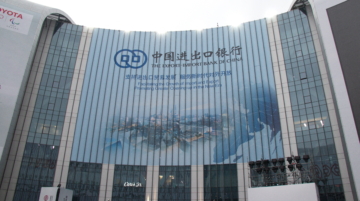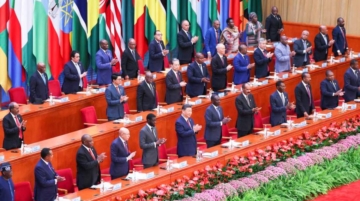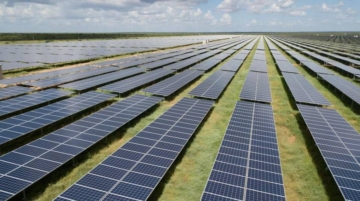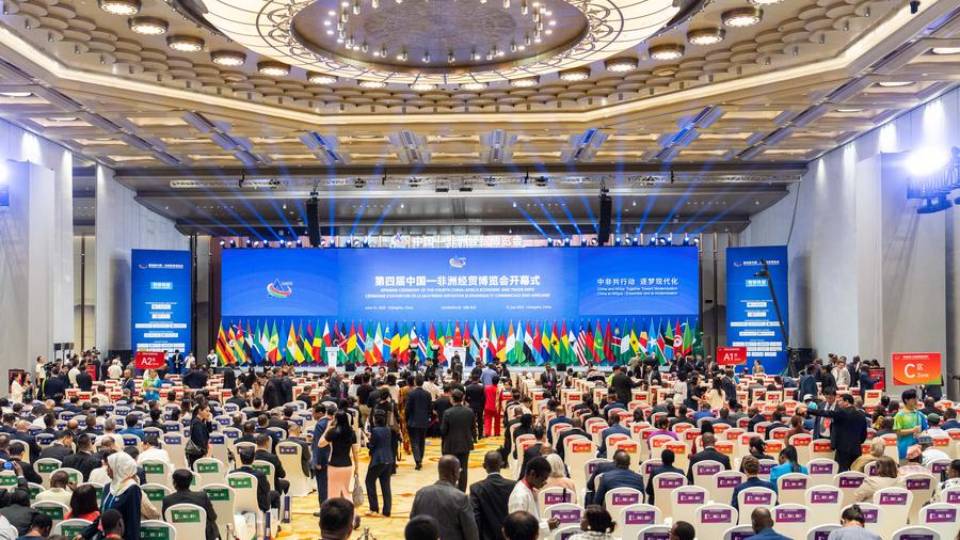
Every power plant begins long before a single shovel hits the ground. Before turbines are ordered, before concrete is poured, and well before the lights ever flicker on, a dense legal and financial architecture must first be assembled. For state-backed Chinese infrastructure projects in Africa, that architecture is built from a series of binding contracts, documents that shape how money moves, who bears risk, and how the project will be delivered and repaid.
As explained in the last article, Chinese investment in Africa’s power sector generally flows through two channels. One is foreign direct investment (FDI), where Chinese companies invest equity and share in the risks and profits of the project. A second is state-backed finance, where African governments take on sovereign loans from Chinese policy banks to construct power infrastructure. This article focuses on the second type: state-backed finance. Specifically, it explains the contracts and financial arrangements governments can expect when undertaking a Chinese-financed infrastructure project using this model.
These projects often follow a structure known as EPC+F – engineering, procurement, and construction plus financing. In this model, a Chinese contractor not only builds the infrastructure but also arranges financing, typically from a policy bank like China Exim Bank. These arrangements are governed by a set of interlinked contracts that determine how the project is funded, how revenues are collected, and what happens if things go wrong.
This article breaks down what to expect when entering such arrangements. It maps the six core contracts that typically form the backbone of these deals, from EPC contracts to on-lending agreements, repayment mechanisms, and loan security arrangements. It provides high-level explanations of the financial terms that borrowers are likely to encounter, interest rates, repayment schedules, confidentiality clauses, and default triggers, and sheds light on what is often left out of these deals, including critical but underfunded components like land acquisition and long-term maintenance.
These are not just technicalities; they are the blueprint for how public debt is structured, how risks are allocated, and how infrastructure is ultimately delivered. In a landscape where power generation is essential but financing options are limited, understanding the fine print is the first step in negotiating wisely. Below are the key contracts typically involved in such projects, along with their roles and major provisions:
Types of contracts in Chinese energy projects
- EPC Contract (Engineering, Procurement, and Construction): This commercial agreement is signed between the host government (usually through a Ministry or implementing agency) and the Chinese contractor building the power plant. It outlines the scope of work, project milestones, completion timelines, and pricing.
- Loan Agreements: These are typically divided into two major types:
- Preferential Buyer’s Credit (PBC) Agreement: Offered on concessional terms. Interest rate is often fixed (e.g., 2% per annum), with grace periods of around 5–7 years, repayment periods of 10–13 years, and total maturity up to 20 years.Funds are not disbursed to the government but flow directly from the lender to the EPC contractor based on milestone certification. These are commonly governed by Chinese law and subject to arbitration in Beijing under CIETAC rules.
- Export Buyer’s Credit (EBC) Agreement: A commercial loan with interest typically set at LIBOR (an interest rate average calculated by London banks) + 3.5%. Grace periods and tenors are usually shorter than PBCs. Terms may be partially negotiable, but Chinese banks maintain strict rules, such as fixed ratios between concessional and commercial finance (e.g., 55/45 split).
- On-Lending Agreement: Signed between the Ministry of Finance and the designated state-owned entity (such as a generation or transmission company). This agreement devolves responsibility for project implementation and loan disbursement, while keeping sovereign liability with the central government.
- Power Purchase Agreement (PPA): Signed between the generation company and a offtaker or utility. It defines the price and volume of electricity sold, which in turn supports the project’s repayment stream.
- Repayment Mechanism Agreements: These establish key financial controls. A Sales Collection Account to hold revenue from electricity sales; and a Repayment Reserve Account to ensure installments are prepaid (often requiring 2–3 months of payments to be held in escrow).
- Security Agreements (E.g. Debentures): Executed by the implementing agency in favor of the lender. These may pledge project assets, rights under the power purchase agreement, and control over revenue accounts.
What to Expect in Terms
- Fixed Repayment Schedules: Borrowers may be expected to begin repayment based on a predetermined calendar, regardless of whether the power plant has reached commercial operation. This structure can create severe liquidity strain, especially if revenue generation is delayed.
- Counterpart Funding Requirement: Governments are generally required to contribute 15% of the total project cost upfront.
- Strict Confidentiality: Loan agreements typically include clauses that mandate the strict non-disclosure of terms and conditions, including fee structures and repayment schedules.
- Cross-Default Clauses: These provisions stipulate that a default on one obligation (even outside the project) may trigger defaults on the project loan.
- Budgetary Commitment: Governments may be required to make annual budget provisions to meet their repayment obligations, with non-payment not excused by fiscal limitations.
What’s Left Out
Loan financing frequently covers only the EPC cost. Critical elements such as resettlement, land acquisition, owner’s engineer services, and transmission connections may be excluded. These ‘off-contract’ costs can add up to 30% or more of the overall expenditure, placing a significant burden on national budgets.
These contracts form the legal and financial foundation of Chinese state-backed infrastructure projects. They structure commitments worth hundreds of millions of dollars, shape how power projects unfold, and determine who bears the risks and how debt is repaid. For African governments, understanding and negotiating these interlinked agreements is a strategic tool for protecting fiscal space and ensuring projects deliver long-term value. As Chinese finance continues to shape Africa’s energy landscape, this legal and financial literacy becomes a form of agency. Yet not all deals are underpinned by conventional loans. In some cases, infrastructure is repaid not entirely in cash, but in commodities such as crude oil, copper, or cobalt. The next article explores the mechanics and implications of resource-backed finance, a more complex, and often more controversial, model that ties infrastructure directly to the continent’s natural wealth.
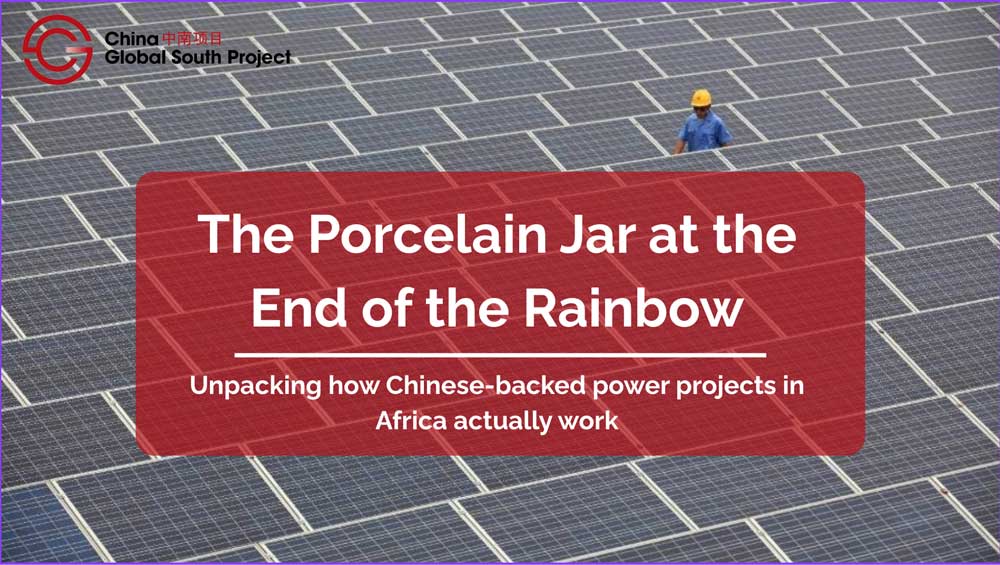
About This Series
This article is part of “The Porcelain Jar at the End of the Rainbow,” a new series from the China Global South Project that unpacks how Chinese-backed power projects in Africa actually work. As global development partners shift and electricity demand rises, understanding China’s role — from financing and procurement to project delivery — has never been more important. Each installment offers practical, field-informed insights for policymakers, developers, and researchers navigating complex infrastructure environments.
The series is complemented by CGSP’s interactive Energy Tracker, a tool that maps Chinese-supported power generation projects across Africa, including data on capacity, financing, ownership, and implementation status.




